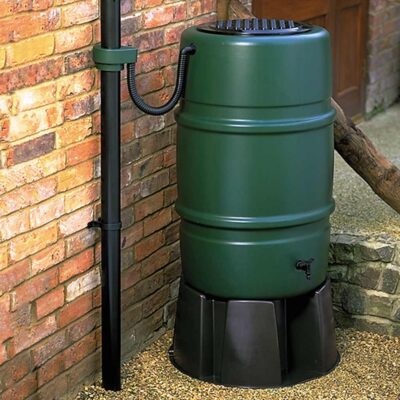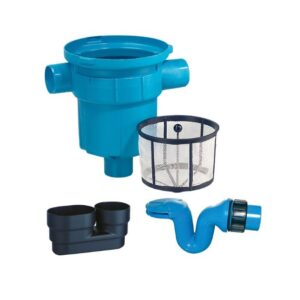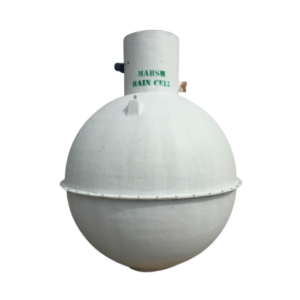Â
Â
Â
Â
Despite the Environment Agency's concerns over future water shortages, UK households are using more water than ever before. The Energy Saving Trust reports that the average household now consumes around 330 liters daily, compared to just 165 liters in 1960. Climate change exacerbates this issue with drier summers and unpredictable rainfall, projecting a 15% reduction in summer rainfall by the 2050s and potentially up to 22% by the 2080s in England. One practical solution to address this growing concern is rainwater harvesting, which is gaining popularity due to its eco-friendly nature.
Rainwater harvesting offers two primary methods: potable, which involves filtering water for drinking or washing, and non-potable, which is used for general purposes like gardening. This article focuses on the non-potable method, detailing its advantages and practical applications while offering guidance for those interested in contributing to environmental sustainability.
Advantages and Uses of Rain Harvesting
Collecting rainwater presents numerous benefits for both individuals and the planet:
Economic Savings: Utilizing harvested rainwater reduces reliance on the mains water supply, leading to potential savings on water bills.
Garden Preservation: During times of hosepipe restrictions, collected rainwater ensures your garden remains hydrated, even during dry periods.
Nutritional Benefits: Rainwater naturally contains beneficial nitrates that promote plant growth and health. Unlike treated water, it lacks chlorine and other chemicals that may harm certain plants.
Energy Efficiency: Relying on rainwater minimizes energy usage since it doesn't require processing at waterworks, further reducing your carbon footprint.
Collected rainwater can be used for various tasks such as watering plants, cleaning vehicles, washing laundry, and even flushing toilets. While it’s not suitable for drinking or bathing without proper treatment, it serves as a hydrating source for pets and wildlife, and can replenish ponds and other water features in your garden.

Required Equipment
Setting up a basic rainwater collection system is relatively simple if you're aiming for a straightforward solution to reduce reliance on the mains supply. You'll need to install a rainwater diverter within your existing drainage system and connect it to a storage solution. Once installed, rainwater flowing through your gutters and downspouts can be redirected to your chosen storage method, ready for use when necessary. The amount of water collected depends on weather conditions, but as a general rule, every square meter of roof and millimeter of rainfall yields approximately one liter of captured water.
For those seeking a more advanced rainwater system capable of supplying household needs, professional assistance is recommended. Such projects involve complex steps requiring specialized expertise and equipment, including excavating an outdoor area for a large tank, preparing a foundation, carefully placing the tank, connecting it to plumbing, installing filtration systems, and setting up an indoor pump system.
Catchment Surfaces
Most homeowners opt for rainwater harvesting systems that gather water from their home's rooftop. However, other surfaces in a typical home and garden can also serve as catchment areas, including rooftops of garages, sheds, greenhouses, and other outbuildings.
Rainwater Diverters
Rainwater diverters are efficient and budget-friendly tools that redirect water that would otherwise flow into the property's drainage system. By attaching a diverter to your downspouts, rainwater can be directed into a storage tank. More details about diverters, including different types and installation guides, can be found in our recent blog post.
If your chosen diverter lacks a built-in filter, consider adding a separate one to prevent debris or contaminants from entering your storage tank.
Storage Options
Three main types of rainwater tanks cater to various needs and preferences:
Rain Barrels: Made from durable plastic, these barrels resemble traditional water containers and are favored by some homeowners for their aesthetic appeal. Typically holding up to 260 liters in the UK, they feature a tap or hose connection for easy access to stored water.
Water Tanks: Capable of storing significantly more water (up to 50,000 liters for commercial use), these tanks can be placed above or below ground. Advanced systems allow rainwater to be pumped indoors for household use, such as toilet flushing or laundry, though a mains water backup is essential. Potable tanks can also supply drinking water after appropriate filtration.
Water Butts: Ideal for domestic use, water butts usually store up to 245 liters or less. Available in various shapes and styles—such as cylindrical or rectangular—they fit snugly against buildings, minimizing space usage. Positioning your chosen storage solution close to downspouts reduces pipework, which is preferable wherever possible.
To determine whether a water butt suffices or if you require a larger option like a rain barrel, assess how much water you’ll likely use weekly. Untreated rainwater tends to stagnate quickly, so frequent use prevents pest and bacterial proliferation.
You can estimate your potential collection volume by multiplying your catchment surface area by the average regional rainfall (available online resources like currentresults.com can help). Then, deduct 20% to account for overflow and evaporation.

Ongoing Maintenance
Once properly set up, a rainwater harvesting system typically requires minimal upkeep. Regular inspections ensure everything functions correctly. Follow the manufacturer’s guidelines, but generally, check gutters and downspouts for debris and clean any filters regularly. Inspect storage tanks for leaks or damage, and examine connecting above-ground or underground pipes (for underground systems). If using a submersible pump, periodically verify its functionality.
Standing water in rainwater systems attracts mosquitoes, but several measures can mitigate this issue. Adding a thin layer of horticultural oil, vegetable oil, or natural soap is a proven method to deter mosquitoes. Alternatively, protect the water with a securely fitted fine mesh net. Some gardeners introduce goldfish to their tanks to control pests, though this approach demands extra care to maintain optimal conditions for the fish.
High Quality Systems
At EasyMerchant, we offer a diverse selection of rainwater harvesting tanks, diverters, water butts, and complete systems crafted by top manufacturers, ensuring superior quality. We provide fast delivery, shipping orders within 1-3 business days.
For advice on selecting the right rainwater harvesting kit or further information on our catchment products, feel free to reach out. Our expert team is ready to assist you.
Shop Rainwater Harvesting:
Aluminum roller shutter doors are automatic roll up doors, fit for industrial factory, warehouse, residential garages and also commercial shops. Its slat is made from double layer aluminum sheet, filled with polyurethane foam inside. So it is thermal insulated and noise proof.
Aluminum Roller Shutter Doors,Aluminum Shutter Door,Insulated Aluminum Rolling Door,Aluminium Roller Garage Door, Automatic Aluminum Roller Door, Electric Aluminum Roller Door
SHANGHAI KENVO DOOR CO.,LTD , https://www.kenvodoor.com

